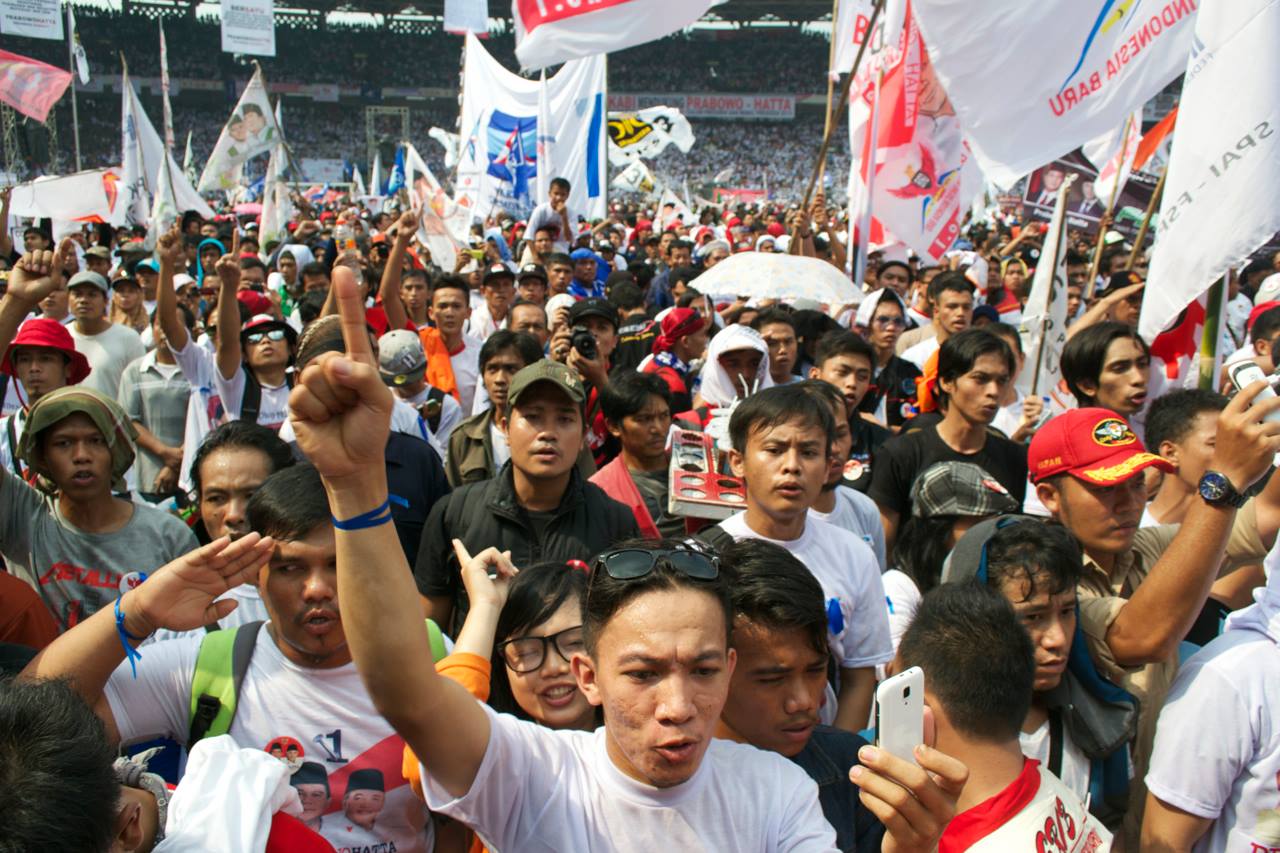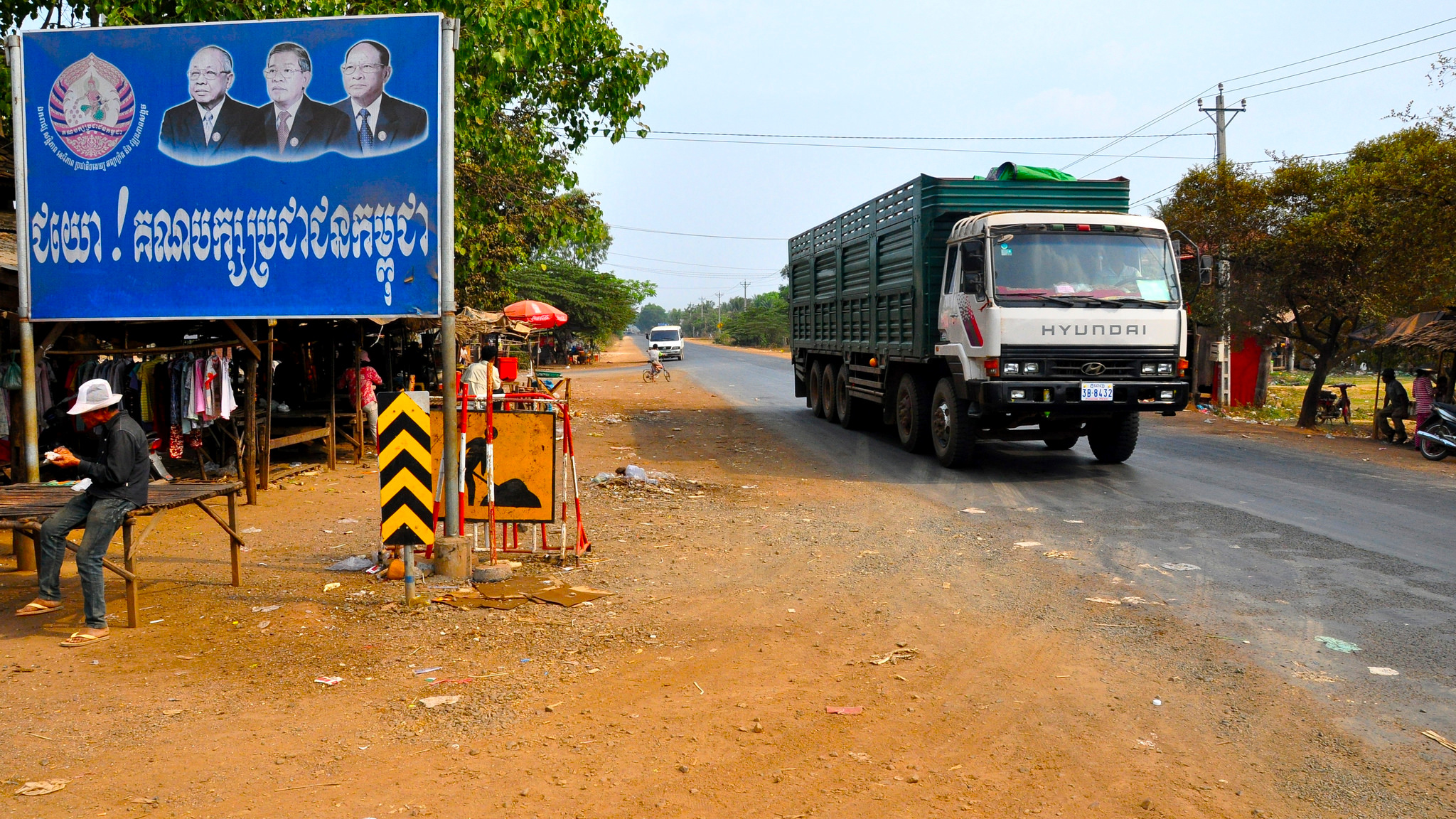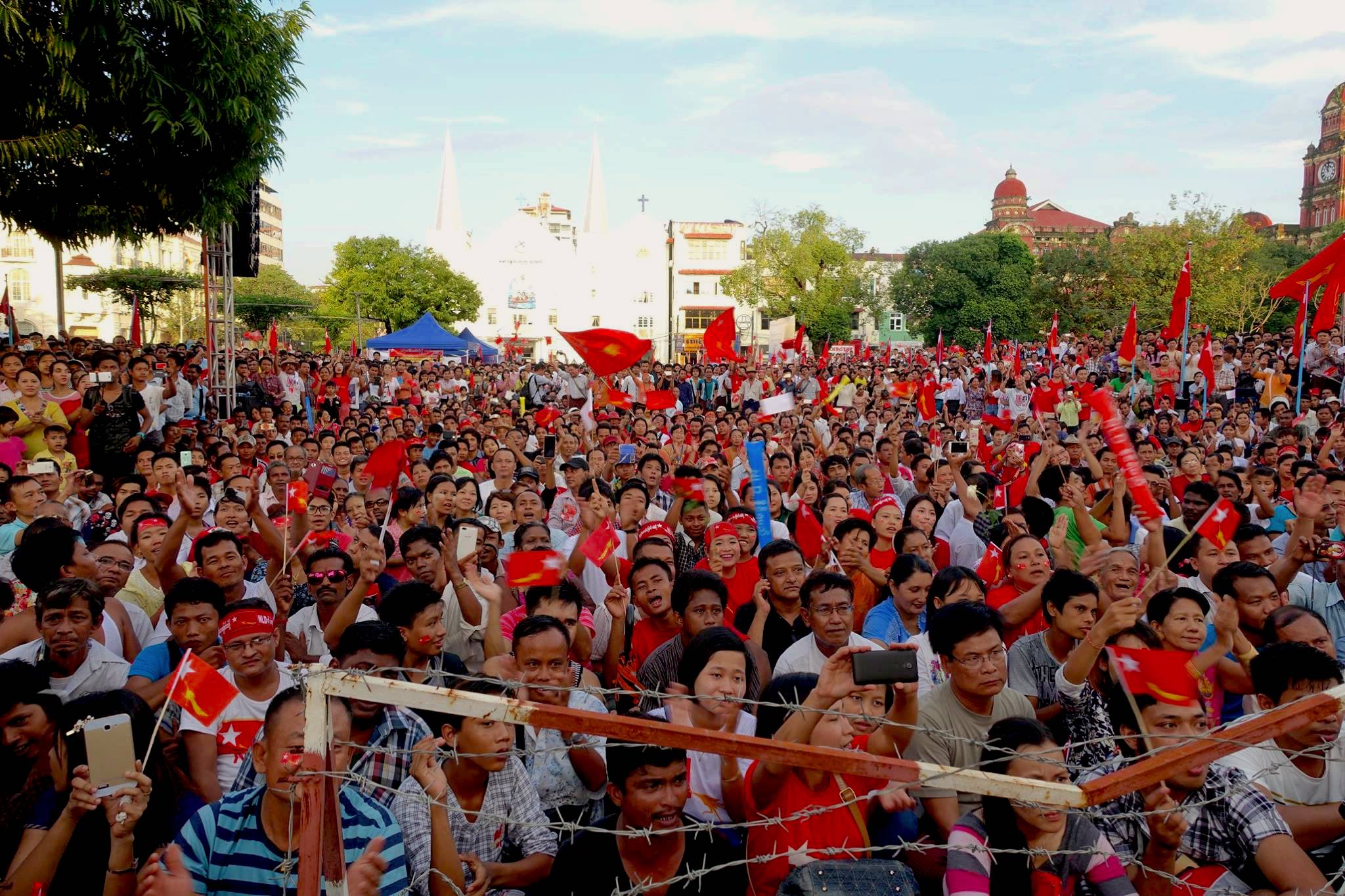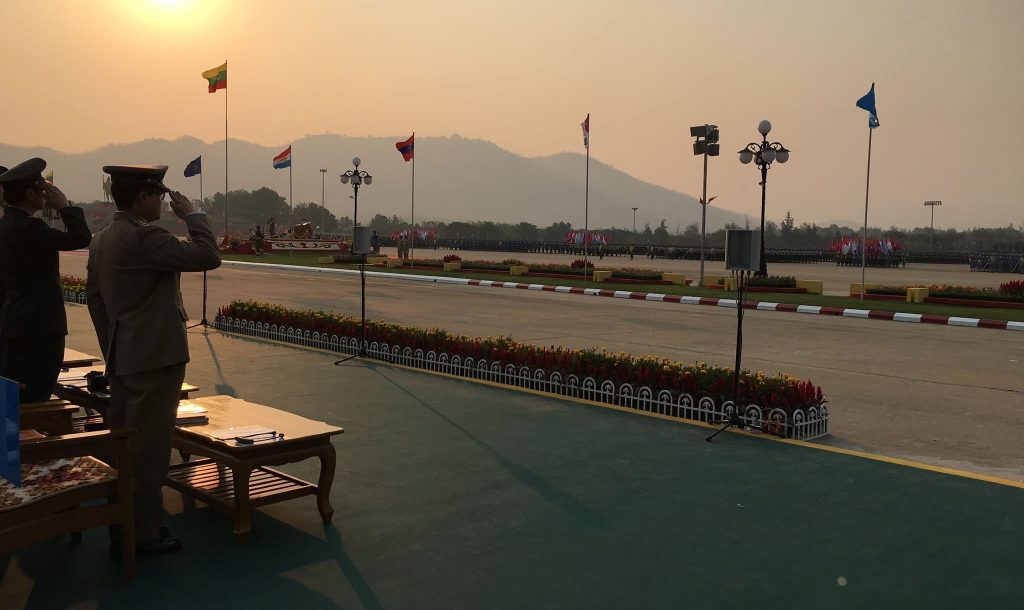Not since World War II has liberal democracy, and the intergroup tolerance that sustains it, seemed so deeply endangered in so many places at once. For the first time in three quarters of a century, illiberalism and chauvinism have stolen the march, virtually all over the globe, on their liberal and cosmopolitan rivals. With narrow voices for exclusion and nativism making frightening headway against broader visions of inclusion and diversity in Britain, France, Germany, Hungary, India, Poland, South Africa, Turkey, and the United States, it seems fair to conclude that they can now gain major ground just about anywhere at any time.
If the flu of political and social illiberalism is circumnavigating the globe, Southeast Asia has precious little immunity with which to withstand it. This is a region where authoritarian regimes have always easily outnumbered democracies, and where liberalism and universalism have always struggled to gain traction against religion, nationalism, and communalism as forms of ideology and identification. So it should be no surprise that in a historical moment when democracy feels unsafe even in formerly safe-seeming spaces, it feels in Southeast Asia as if democracy could readily be extinguished entirely.
It wouldn’t be the first time since decolonisation that Southeast Asia suffered a complete democratic wipe-out. Historically speaking, the region’s democratic nadir ran from the early 1970s, when Malaysia’s Barisan Nasional and the Philippines’ Ferdinand Marcos converted their electoral legitimacy into outright authoritarian powers, until the mid-1980s. For most of that decade and a half, Southeast Asia boasted literally zero regimes that met even minimally democratic standards—with the minor exceptions of Thailand’s fleeting democratic experiment from 1973–76 and grudging democratic opening over the course of the mid-to-late 1980s. The Cold War did not produce the dominos of successive collapse from capitalism to communism across Southeast Asia that American interventionists feared, at least outside of what was formerly French Indochina. What it did help produce, though, was a region-wide domino effect of democratic collapses into authoritarianism.

A presidential campaign rally for Prabowo Subianto in Jakarta, June 2014. Photo: Liam Gammon
Could Southeast Asia domino its way into a total 1970s-style democratic abyss again? Since most of the region is enduringly authoritarian to begin with, it is already—and always—most of the way there. As in the early 1970s, the global ecology for democracy is looking downright toxic. External contributions to democratisation in Southeast Asia should never be overstated, of course. But whether by coincidence or not, democracies in Southeast Asia (as well as Northeast Asia) have almost always either been cosy or trying to get cosier to the United States. If that gravitational pull of American democracy has ever really reached all the way to Southeast Asia, it has changed from propulsion to repulsion almost overnight with the presidential ascendancy of Donald Trump. One could have recently imagined, for example, Vietnam following the path of Taiwan (and arguably Myanmar) by responding to an increasingly threatening and intrusive China by burnishing democratic credentials as down payment on a stronger American alliance. If Hanoi wants better ties with Washington now, it would be better advised to start building the right brand of luxury hotels than the right kind of political regime.
Old dominance
Even before disturbing global authoritarian trends emerged, Southeast Asia displayed a dismal democratic baseline. We would thus do well to distinguish the cases of old dominance that establish that dismal baseline from what we might call the new dominos that find themselves either tumbling or looking increasingly wobbly in these troubled global times.
None of the region’s long-dominant authoritarian regimes appear deeply endangered at the moment. Singapore’s PAP is riding high in the saddle after its most recent electoral-authoritarian landslide. It remains disinclined toward political liberalisation despite the manifest lack of risk to its own dominance from doing so. The gossipy drama of the Lee family feud distracts from the deeper point that an honest and independent media outlet could never get a license to investigate and report on it freely and openly. In Malaysia, venality is up far more than brutality is down. So long as the ruling BN can compensate for its high-level corruption with high-level repression—especially by re-imprisoning opposition leader Anwar Ibrahim—they seem likely to get away with it. Commentators commonly fret that Hun Sen just killed the last remnants of democracy in Cambodia when he shuttered the Cambodia Daily and moved to ban the country’s only major opposition party. But what is really transpiring is a transition from multiparty authoritarianism to single-party authoritarianism, since Cambodia has not met even minimal democratic standards for the past 25 years. Speaking of single-party dictatorships, Vietnam’s leaders have recently stepped up repression of dissidents. But it is not as if the Vietnamese Communist Party has ever brooked serious dissent in the first place.

One of the ubiquitous billboards featuring Cambodian strongman Hun Sen. Photo: Flickr user Erwan Deverre, Creative Commons
Not coincidentally, in all four of these cases, old dominance is rooted in old authoritarian ruling parties. In this sense, Southeast Asia is far from unique. Dictatorships ruled by parties have long tended to be more stable than those in which the military plays the leading role. So it stands to reason that the greatest action in the region, not just now but over the past decade, has been in countries where the military either still is, or in the past was, a leading power in political life. A militarised past means a high potential for a domino-ing present.
The new dominoes
Just as we can identify four clear cases of old dominance rooted in authoritarian ruling parties—Cambodia, Malaysia, Singapore, and Vietnam—four cases fit more readily in the new domino category: Indonesia, Myanmar, the Philippines, and Thailand. Across all these cases, long histories of parties failing to decisively supersede the power of the military left democracies with relatively little institutional strength to sustain themselves. In the case of Thailand, these weak civilian institutions have already laid the groundwork for outright democratic collapse at the military’s—and monarchy’s—hands.
Even among these latter four cases, I hasten to add, the story in terms of national regime type has been one of stability far more than instability. Of the eight Southeast Asian cases discussed here, only in Myanmar and Thailand have outright regime transitions occurred since the turn of the millennium. And one of the two, Myanmar, has moved in a more democratic direction since 2011. So it is worth stressing that Southeast Asian democracy has not exactly been cratering.
But the times and the tides seem to be turning. Could Myanmar soon follow Thailand’s recent path back to unchallenged military rule? Could the Philippines, now ruled by a strongman backed by martial law in Mindanao, descend from its current fragile status as an illiberal democracy into an outright one-man dictatorship? And does the shocking imprisonment of Jakarta’s ethnic Chinese former governor on blasphemy charges portend the demise in Indonesia of the tolerant norms on which even a minimalist democracy depends?

An election rally for the National League for Democracy in Yangon, October 2015. Photo: Olivia Cable
Although all four of these countries have been travelling distinctive trajectories downward, there is a vital common theme. When procedural democracy arises in otherwise politically and socially illiberal and intolerant conditions, democracy’s own key features can easily—and ironically—undermine its own quality and even threaten its own survival. Specifically, democratic procedures have a tendency to produce unbridled majoritarianism and unconstrained leadership in the absence of powerful countervailing forces to contain them. In settings where liberal institutions and societal commitment to inclusive and cosmopolitan values are relatively weak, minorities exist at the mercy of majorities. Sometimes that minority is defined demographically; other times it is established electorally.
The Philippines and Thailand both exemplify the dangers of domineering and abusive executives in illiberal democratic settings. Empowered and emboldened by decisive electoral majorities, Thaksin Shinawatra has attempted and Rodrigo Duterte is now attempting to overcome legacies of unresponsive, oligarchic politics in both countries through force of personal will. In Thailand this did not lead to outright populist authoritarianism, in part because the Thai military and monarchy saw fit to re-establish oligarchic authoritarianism instead. It is in the Philippines where a brazenly violent populist seems inclined to seize as many authoritarian-style powers as the system and public will allow. As abysmal as Duterte has been for human rights, his defenders quite plausibly prefer a highly popular president responding to actual social ills like the drug trade over a discredited one hanging on through electoral malfeasance like Gloria Macapagal-Arroyo did a decade ago.

Anti-Thaksin “Yellow shirts” protesting in Bangkok, November 2012. Photo: Nick Nostitz
Human rights are precisely the terrain on which conditions are sliding downhill in Indonesia and Myanmar as well. In Indonesia both anti-communist and anti-Chinese sentiment have made frightening comebacks from their Cold War demises. Since these were the same fear-filled mentalities that spawned and sustained Suharto’s New Order, their re-emergence suddenly makes democracy feel unsafe again at the national level. Conditions in transitional Myanmar are of course immeasurably more dire. But democratisation does not deserve the brunt of the blame for an ongoing calamity like the forcible expulsion and—why split hairs?—the state-sanctioned mass murder of the Rohingya. In Myanmar as in Indonesia, it is the ideological potency of ethnic and religious nationalism that explains why minorities get brutalised. Ethnic nationalism—or what I would prefer we call nativism—is one of the most dangerous gateways to authoritarianism, as well as a sapper of democratic substance. Democracy may embolden an electorally supercharged ethnic or religious majority to believe it can do whatever it wants with unvalued minorities. But it is authoritarian legacies of militarisation in Myanmar and ethnic and ideological scapegoating in Indonesia that best explain the severity and ugliness of both countries’ nativist downturns.
Reasserting liberal democratic values
If one vivid lesson shines through the dim shadows of Southeast Asia’s democratic downslide, it is that democratisation and human rights are far from the same thing. Especially when a country’s citizenry is more deeply steeped in religious than in liberal educational institutions, they will quite understandably tend to see the world in terms of good people and bad people. Meanwhile nationalists steeped in a lifetime of authoritarian state propaganda are analogously primed to see the world in terms of us, who belong, and them, who do not. Under such conditions, democratic rights may get extended; but no further than the ranks of the supposedly virtuous.
What all this suggests is that our global crisis of liberalism and democracy is first and foremost a crisis of education. Heroic histories of mass urban mobilisation to topple dictatorships naturally lead us to expect that if civil society is to help forge democracy, it will be by organising the resistance: “People Power,” as we like to say.
This may still be largely true in Southeast Asia’s cases of old dominance, where dictatorship must somehow be dislodged before democracy can be defended. But in Southeast Asia’s new dominos, as in Western democracies where pluralism is under assault, a deeper educational imperative underlies the organisational challenge confronting us. Remarkably, we have reached a moment when our politics most urgently needs to be driven not by an exalted desire to maximise human freedom, but by the base yet pressing need to minimise human cruelty. And if educational institutions—with a big assist from the mass media—do not spread the message that even the lives of minorities and suspected criminals have value and are worthy of protection, who will? For civil society to help save Southeast Asian democracy—or democracy anywhere in these dark days, to be truthful—its educational mission will need to loom as large as its organisational one.
• • • • • • • •
Dan Slater is Professor of Political Science and incoming Director of the Weiser Center for Emerging Democracies (WCED) at the University of Michigan. His research has focused on the historical and contemporary sources of authoritarian durability and the emergence of democracy, particularly in Southeast Asia. You can follow him on Twitter at @SlaterPolitics. This post appears as part of the Regional Learning Hub, a New Mandala series on the challenges facing civil society in Southeast Asia, supported by the TIFA Foundation.

 Facebook
Facebook  Twitter
Twitter  Soundcloud
Soundcloud  Youtube
Youtube  Rss
Rss 